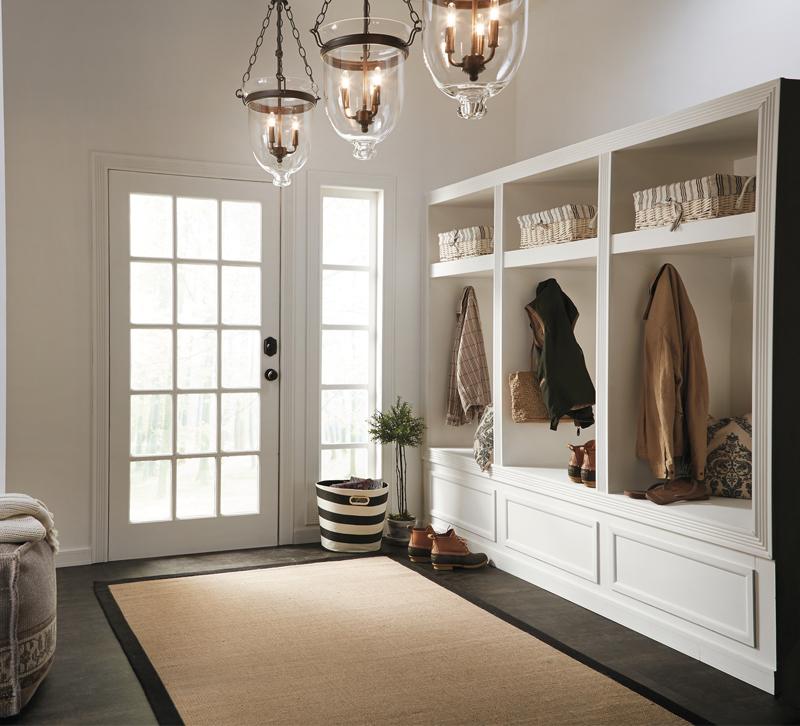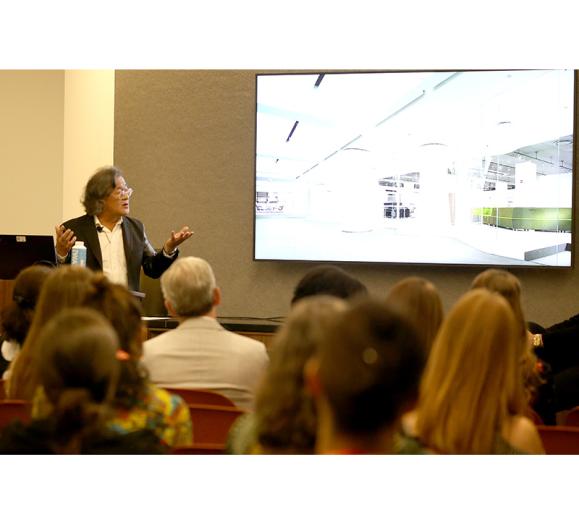I remember attending the KBIS tradeshow in 2010 and overhearing a joke. “Tuscany called, they want their kitchens back!” For 10 years, the Tuscan, Olde World look was radically popular and then, almost as if a switch had been pulled, it was over.
Like Dug the dog being distracted by a squirrel in the movie Up, designers quickly veered to a new, hotter trend. The over-scaled, multi-layered finishes, exaggerated ornamentations and scores of crystals and scrolls replaced the simpler Classic Traditional as the 20th century ended. That style held tight for almost 20 years prior. The Olde World look was replaced with our current “traditional” favorite, Vintage Industrial, now popular for about five years. Looking back on the history of lighting trends, the evidence would suggest that Vintage Industrial will maintain popularity for a slightly shorter period of time then it predecessor. Should we start scaling back our Vintage Industrial inventory for 2020? 2021? 2023? Perhaps, but using history to predict the future is complicated.
In the 1960’s, Early American style was all the rage. I grew up in the 60’s and remember countless friends’ homes decorated with hobnail and doilies. Early American had a 16-year run before being replaced with Country. The Country style was a bit softer than Early American, almost a transitional version. Student Shade pendants and oak wood were everywhere. Despite its popularity, it held on to dominance for only about a dozen years, substantially shorter than its predecessor.
The history of the assorted versions of contemporary style is a bit more scattered. As we are now aware, the 1960’s were filled with Modern design (now called mid-century to remind those of us who were around at the time that we are old!) It was then replaced with a “harder” 70s Contemporary that quickly morphed into the Soft Contemporary that existed from the 1980s to the end of the century. With a new millennium, a new Contemporary arrived, coupled with a revisiting of the 1950-60s modern.
If we look at the past history of Modern, the style has a shelf life of about eight years. In its original version and in the mini-resurgence in the mid 80s, that was the longevity. That would tell us to look for an end of popularity sometime around 2020, if the pattern is repeated again. It also tells us that Contemporary should begin to soften VERY soon. We are, as a matter of fact seeing then right now. The history of contemporary is proving to be predictable!
Throughout the life of residential interiors, there have been a number of less popular, but nonetheless meaningful mini-trends that influence homeowners and instigate redecorating projects. Mediterranean decor and to a slightly lesser extent French Provincial had a 10-year run between the 1960s and 70s. A Victorian resurgence popped up in 2000 and ran for about nine years. Arts & Crafts/Mission interiors resurfaced in the mid-2000’s, also for about ten years. None of these were dominant looks, but each managed to control a small portion of support for a decade. With that information in mind, are there current styles that might fall into this same pattern? We might want to review the Transitional Crystal (Chrome and Crystal) look. It will be 10 years old in 2020. The Lodge/Island/Cottage look is actually into its teen and could be ripe for closure. We should be cautious!
Whether it is oil-rubbed bronze or overstuffed transitionally designed sofas. People will often state that this look is “timeless.” Fortunately for manufacturers and retailers, that is NEVER the case. Styles always have a lifespan. Designs become dated. Things change. If not, I’d still be wearing my timeless platform shoes and polyester suit to disco dance with my wife who would of course be wearing a timeless poodle-skirt, knit sweater and ponytail. The question is knowing when to hold and when to donate the crackle glass and iron frame pendant to the Goodwill.
Jeffrey R. Dross is the Corporate Director of Education and Industry Trends at Kichler Lighting.







